

Choosing the right projection screen is the first step to getting the most enjoyment from your home entertainment system. Even basic entry-level projectors require a flat surface to produce the best images. Currently the range of available projection screen aspect ratios includes 4:3, 16:9, 16:10, and 2.35:1. Widescreen 16:9 and 2.35:1 formats are the most popular size/ratios for homes. This article will explain ambient light rejecting screens and the two types of ambient light rejecting screens, the ALR and CLR.
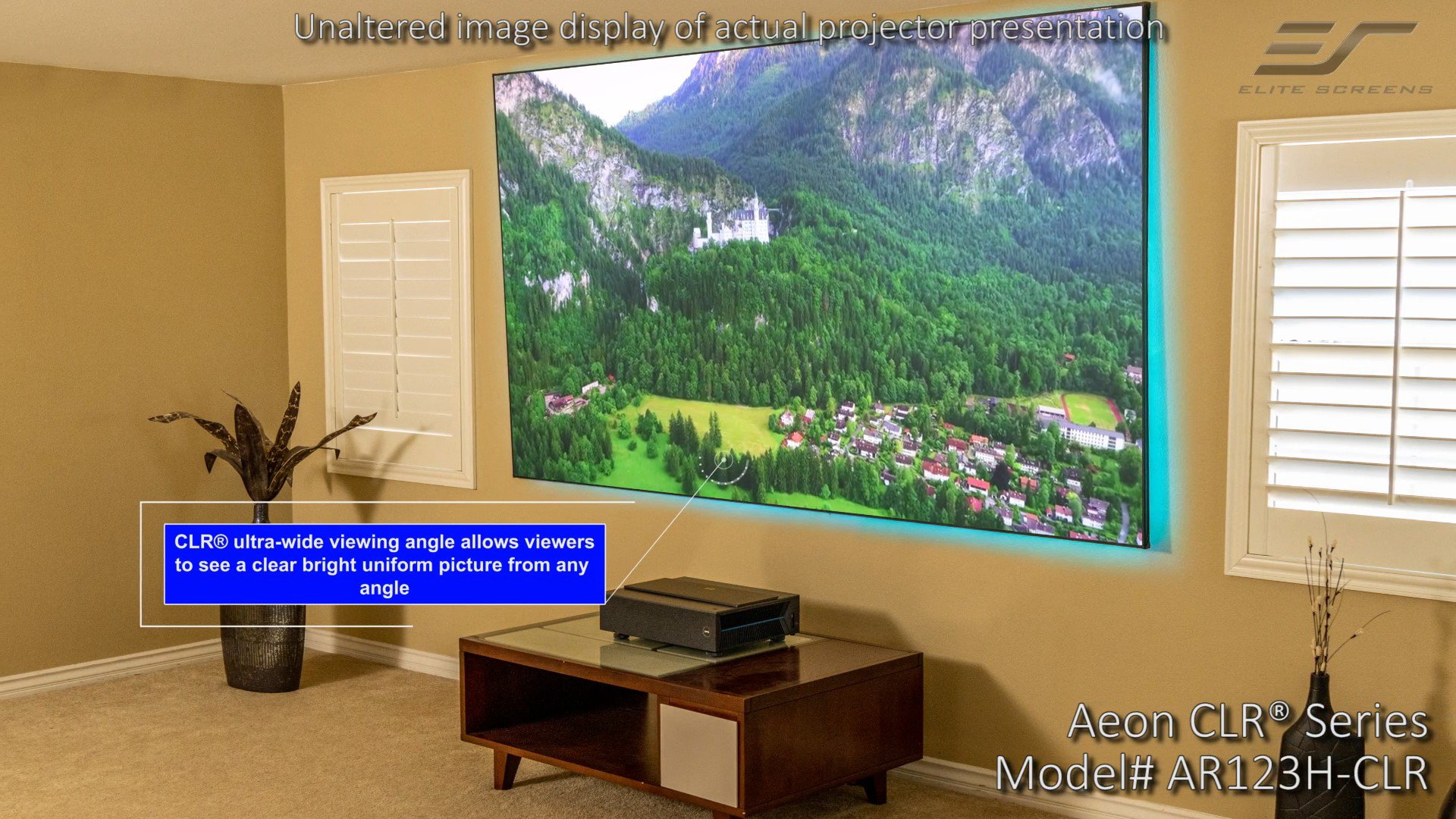
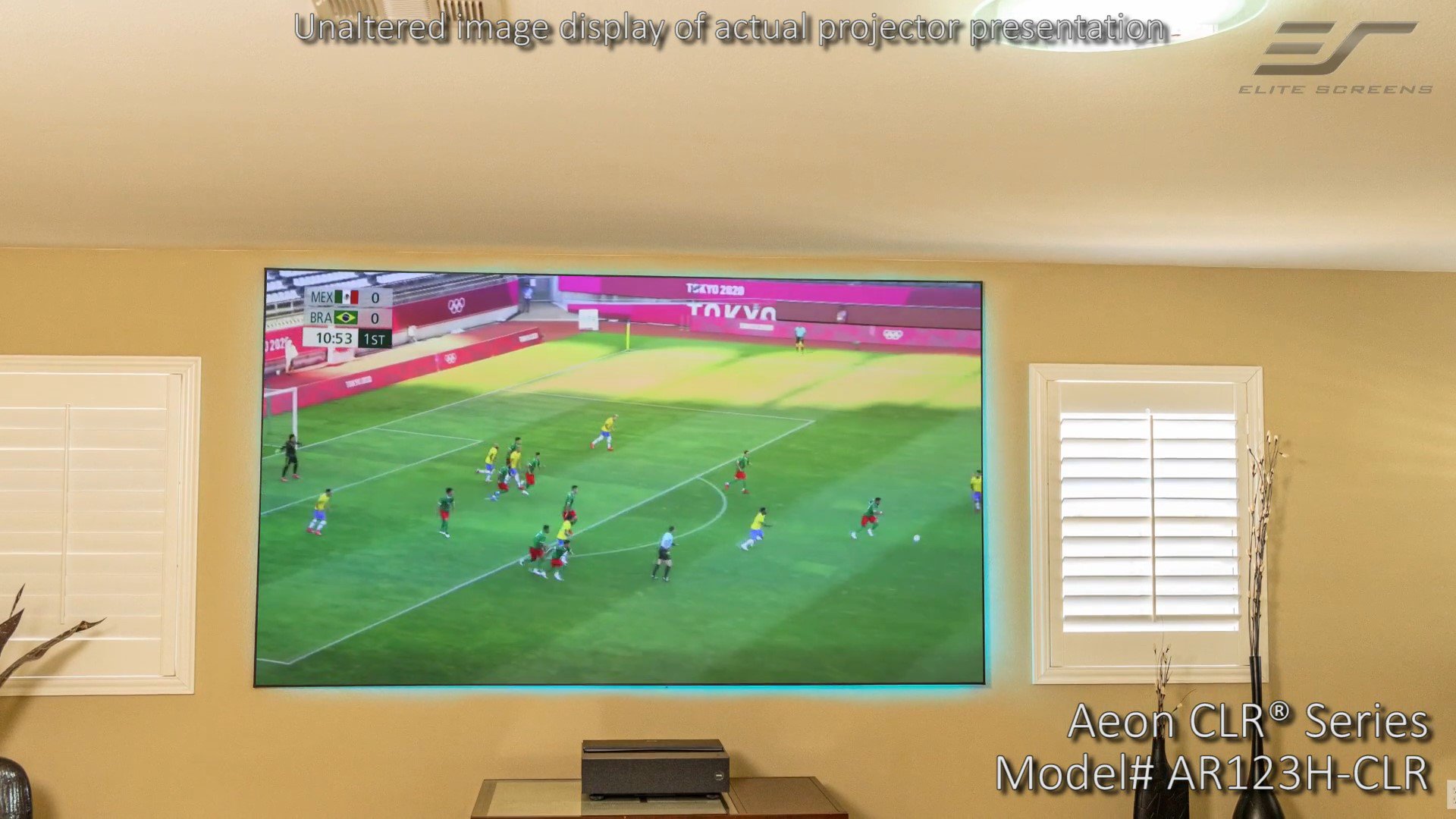
A light rejecting screen features special optical technology comprised of embedded lenticular screen with black-grid structure, whose black portions absorb ambient light while white elements reflect projected light directly to the viewer. This optical technology enables light rejecting screens to be used in fully lit indoor settings, creating the clearest and most faithful images of the highest quality.
*Please choose the proper ambient light rejecting screen according to the throw ratio of your projector.
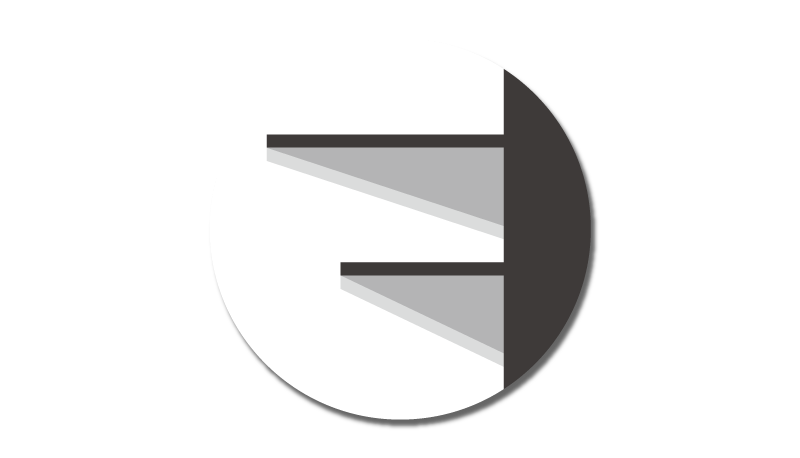
Lenticular Screen with Black-grid Structure
Traditional projection screens rely on specular reflection, which causes problems with glare and the so-called spotlight effect. To counteract these issues, light rejecting screens feature enhanced anti-glare (AG) properties which diffuse reflection to eliminate spotlighting.
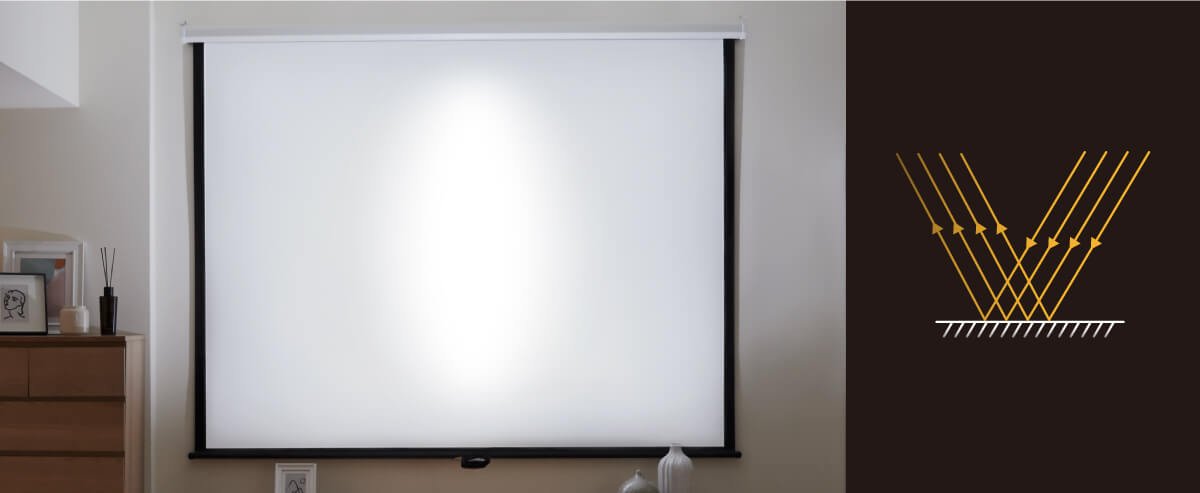
Screens without anti-glare properties exhibit spotlight effects
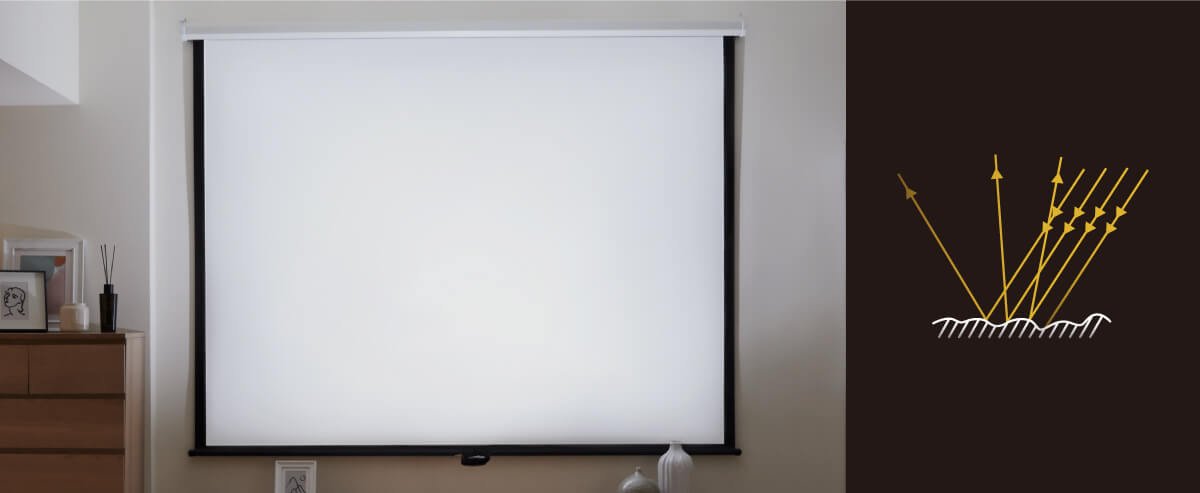
Screens with anti-glare properties do not suffer spotlight effects
Regular projection screens also typically use flat screens or repeating optical structures, which contain major defects. Flat screens reflect much of the main projected light up towards the ceiling, causing diminished brightness and inadequate image quality, while screens with repeating optical structures result in brightness uniformity regions.

Flat Screens - main light reflected toward the ceiling
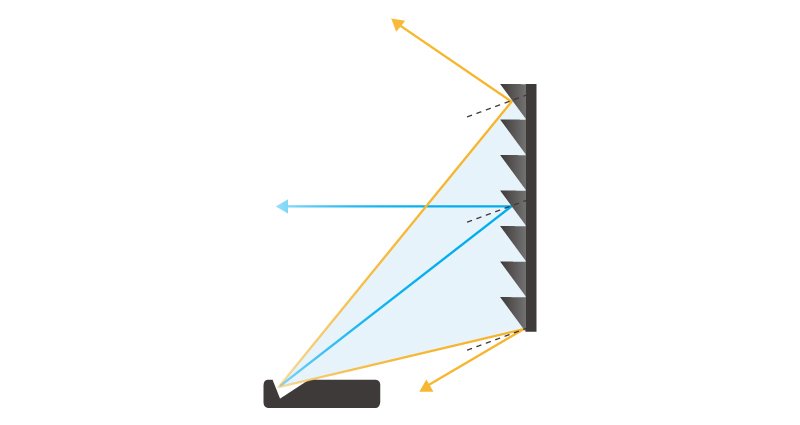
Repeating optical structures - with centrally-focused design, light from the top and bottom is uneven
With varying projection angles compounding the problems described above, a single design solution is incapable of addressing the problems of uneven brightness uniformity. Only an adaptive design can effectively deliver light to the viewer, and only light rejecting screens which employ a gradient optical structure can assure superior image quality.

Gradient Optical Structures - because the angle of incoming light varies, only an adaptive design can effectively deliver light to the viewer, which requires gradient optical structures
Ambient Light Rejection screens (ALR) reflect light back to viewers in a controlled fashion, unlike regular screens that reflect less light and do so in all directions. Remember, the more light a screen absorbs, the worse the image quality. ALR screens bounce more light back to viewers, resulting in a brighter and bolder image while more effectively redirecting ambient lighting so that it doesn’t interfere as much with image quality. However, positioning of projectors and room lights still matters, and if both face the screen from the same angle, ALR doesn’t work as well.
CLR or Ceiling Light Rejecting® material is a patented technology from Elite Screens that aims to improve on regular ALR. The material used absorbs up to 95% of incoming light from projectors while negating washout from ambient lighting, especially big ceiling lights. Contrast reaches up to a 100 times that of plain non-reflecting white or grey screens. We recommend matching BenQ laser projectors with the Elite Screen Aeon CLR® 3 Series.
Certainly there are many types of screens you can choose from and it can get confusing. That’s why we have an overall guide that introduces the projection screen varieties, and you can learn a lot by taking a look.
However, to provide a quick answer to the question at the top of this paragraph, then yes, in many cases you should invest in an ALR or CLR screen to improve viewing experiences. Traditional or basic screens don’t do a good job of rejecting or bouncing ambient light. And while this is fine in a dark room, if you do have more light coming in then your image will appear washed out and faded on regular screens. If you know you’ll be watching content in a room that may be bright at times, we recommend going for an ALR or CLR screen. But proof is in the actual experience. With regular screens being very affordable, you can give one a try and if it works to your satisfaction, stay with that. You can always get an ALR or CLR screen later to improve viewing if needed.
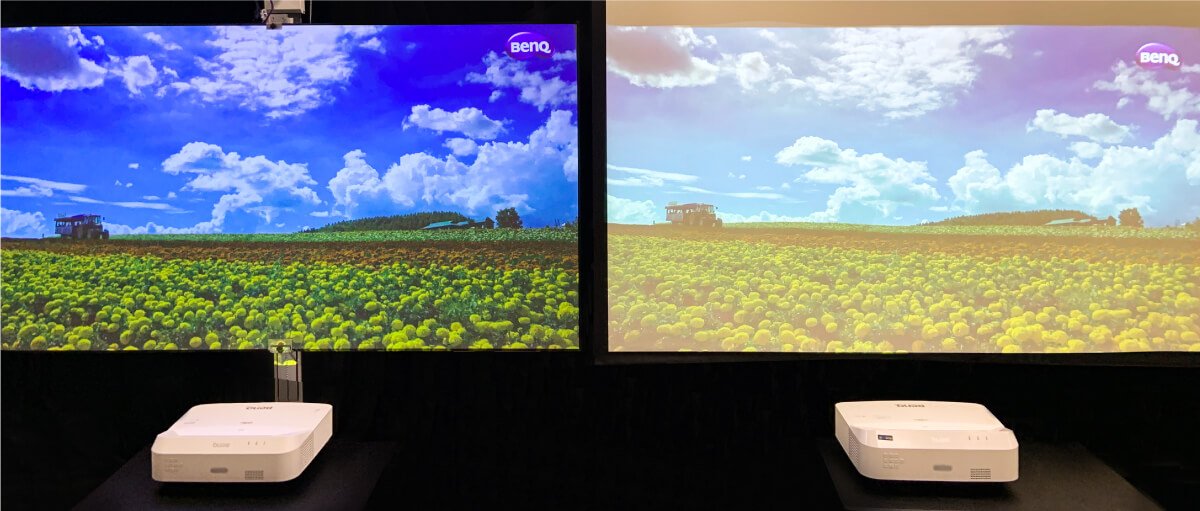
Lights on
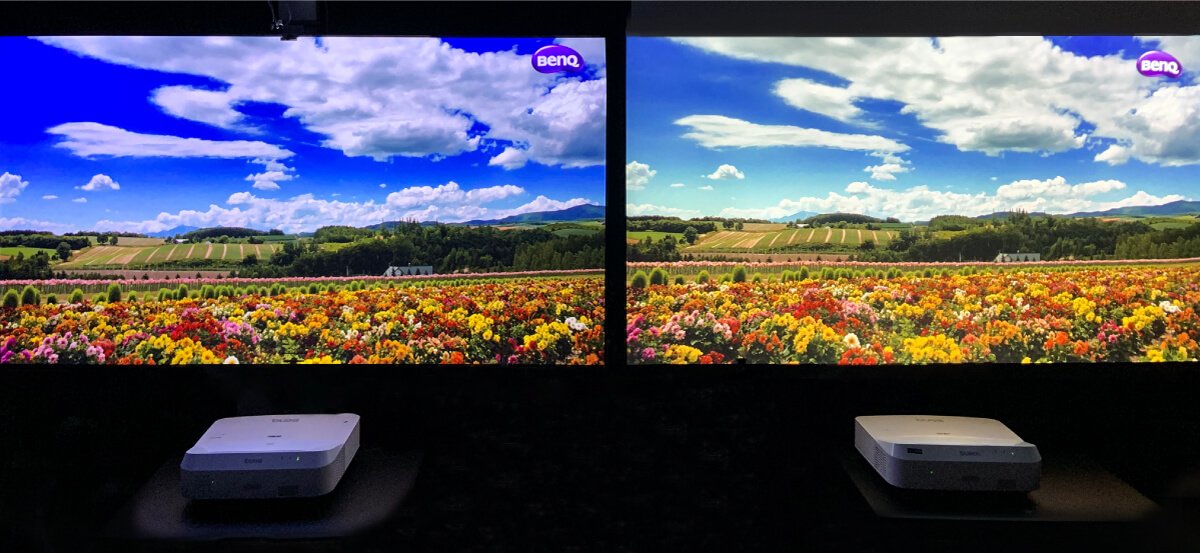
Lights off
{{title}}
We will notify you when we have more.
We will send you an email once the product become available.Your email will not be shared with anyone else.
Sorry, our store is currently down for maintenance.We should be back shortly. Thank you for your patience!